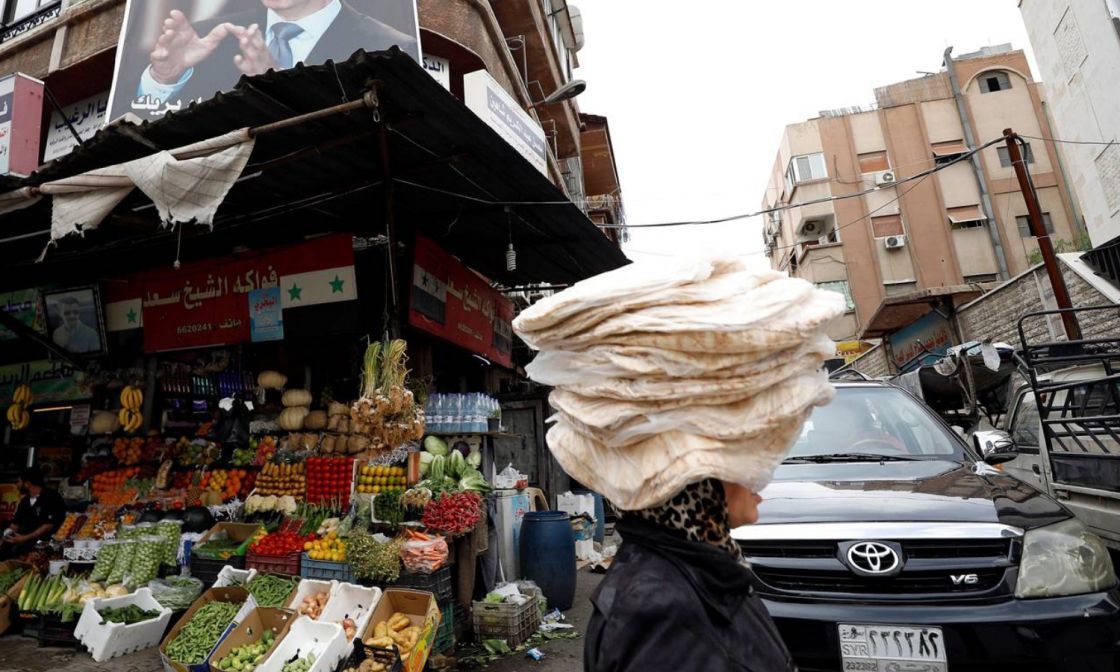- Editorials
- Posted
Kassioun Editorial 1106: Poverty and Hunger, and the Program of the First Day
The UN defines the minimum and maximum limits of poverty (i.e., the hunger and poverty limits) as follows: $1.00 per day per person (the hunger limit) and $2.15 per day (the poverty limit). The exchange rate of the Syrian pound today against the dollar is around 6,700 Syrian pounds per dollar.
Accordingly, the hunger limit for a family of five is $150 per month, or about one million Syrian pounds; and the poverty limit is $322.5 dollars or 2,160,000 Syrian pounds per month. As a reminder, the Kassioun quarterly index, on 2 January 2023, recorded 2.5 million Syrian pounds as the minimum cost of living for a family of five, which is close to the figure based on the UN calculation method, but it is certainly more accurate because it is not based on a general definition that is inclusive of all countries, but rather on a local consumption basket that measures the prices of the various basic commodities needed by the Syrian family.
As for the wage that corresponds to the poverty line, it can be calculated after considering the dependency ratio, which can be considered 2 to 5 in the current circumstances. That is, in every family of five people, two people work to secure the family’s livelihood. In this case, the necessary minimum wage is 1.08 million Syrian pounds according to the UN, or 1.25 million Syrian pounds according to the Kassioun index.
The official minimum wage is 92,000 Syrian pounds, and even the upper limit for the highest classes does not reach the minimum required to avoid poverty. Accordingly, it is not difficult to conclude that there are no wages in Syria that get wage earners to the level of poverty, neither in the public sector nor in the private sector. That is, all wage earners are below the poverty line, and with them, of course, broad classes of farmers and small crafts owners, not to mention those who work and earn on a daily basis.
The percentage of Syrians who are below the maximum poverty line exceeds 95%. In 2010, this percentage had reached 44%, jumping from 30% in 2005. This is of course thanks to the liberal policies that were officially adopted that year, which means that the move towards plundering wages and plundering their purchasing power for the benefit of profit-holders is not a new trend that emerged with the explosion of the crisis in 2011. Rather, it is a trend that preceded it, and a major cause thereof, and the explosion of the crisis and with it the sanctions only made it deeper and more disastrous.
The Syrian constitution currently in force states in Article 40, second paragraph, the following: “Each worker shall have a fair wage according to the quality and output of the work; this wage shall be no less than the minimum wage that ensures the requirements of living and changes in living conditions”.
In terms of the figures, the Syrian constitution says: any Syrian worker has the right to receive a minimum wage of 1.08 million Syrian pounds (if we adopt the UN method of calculation) or 1.25 million Syrian pounds if we adopt the Kassioun index. This means that the entire current wage policy is openly unconstitutional, and that the minimum wage should be at least 11 times what it is today. The average wages should be three times the minimum, and the upper wages should be seven times the minimum. That is, respectively, wages should be: the minimum 1.08 million Syrian pounds, the average 3.24 million Syrian pounds, and the maximum 7.56 million Syrian pounds.
Achieving this should be through real financing sources, and not through inflationary financing sources, because the latter will not change anything in the relationship between wages and prices. To the contrary, it will lead to a further decrease in the purchasing value of the currency and implicitly the wages.
Achieving this increase of real sources has two main aspects: redistributing wealth between wages and profits in favor of wages. This includes uncovered and hidden profits, i.e., the profits of corruption and the powerful in all their forms. The second aspect is to get the economy wheel to rotate again so that real production comes back and becomes a main source for increasing wages.
Starting to realize both aspects can only be through a political solution, because a political solution means, on the one hand, breaking the sanctions and blockades that contribute to preventing the wheel from turning, and on the other hand, it means creating the necessary national political will to redistribute wealth between profits and wages. This has no weight within the current system, which exists in isolation from people’s pain, continues to implement the sabotaging economic recommendations of Westerners, and continues to deepen the liberalization of the economy and weaken its productivity, leading to its complete destruction, and the country’s destruction along with it.
Implementing UNSC Resolution 2254 has become the only way to lift the scourge of hunger off the Syrian people, end the state of siege and sanctions, and with it the state of de facto division, and end the state of control by warlords and corruption. The indicators and figures mentioned herein should be atop the list of the program for the first day after the crisis.


